Explore the Thang Long Imperial Citadel
Thang Long Imperial Citadel is a massive architectural work, built by dynasties during many historical periods and has become the most important monument in the system of monuments in Hanoi in particular and the country in general. Thang Long Imperial Citadel is a complex of relics associated with the history of Thang Long capital and Hanoi province, starting from the pre-Thang Long period (An Nam dominated the 7th century) through the Dinh - Early Le dynasties, and developed strongly. under the Ly, Tran, Le dynasties and Hanoi citadel under the Nguyen dynasty. This is a massive architectural work, built by dynasties during many historical periods and has become the most important monument in the system of monuments in Hanoi in particular and the country in general.
Thang Long Imperial Citadel is a complex of relics associated with the history of Thang Long capital and Hanoi province, starting from the pre-Thang Long period (An Nam dominated the 7th century) through the Dinh - Early Le dynasties, and developed strongly. under the Ly, Tran, Le dynasties and Hanoi citadel under the Nguyen dynasty. This is a massive architectural work, built by dynasties during many historical periods and has become the most important monument in the system of monuments in Hanoi in particular and the country in general.
At the 34th session in Brazil on July 31, 2010, the World Heritage Committee recognized the Central Area of Thang Long - Hanoi Imperial Citadel as a World Cultural Heritage with the following value criteria: evidence of the exchange between influences coming mainly from China in the North and the Champa Kingdom in the South; testament to the long cultural tradition of the Vietnamese people established in the Red River Delta, which has been a continuous center of power from the 7th century until today; Directly related to many past cultural and historical events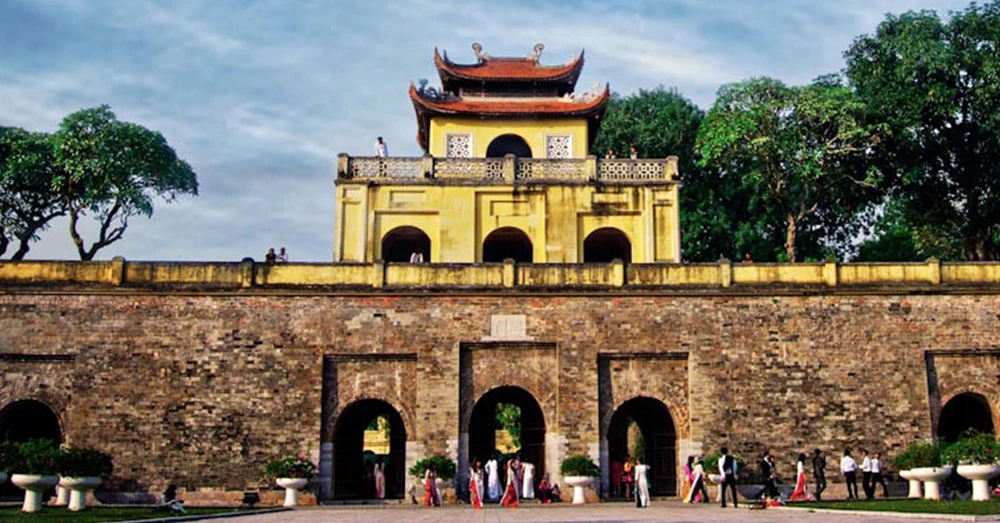 The Thang Long Imperial Citadel Central Area being inscribed on the World Heritage List is an event of extremely great significance to Vietnam, demonstrating our steady steps in the work of preserving and promoting value for this particularly important monument. Currently, the central area of Thang Long Imperial Citadel - Hanoi (including Hanoi ancient citadel and 18 Hoang Dieu Archaeological relics) is located on a quite large campus: 18,395 hectares, in Dien Bien and Quan Thanh wards. , Ba Dinh district, Hanoi city, limited by:
The Thang Long Imperial Citadel Central Area being inscribed on the World Heritage List is an event of extremely great significance to Vietnam, demonstrating our steady steps in the work of preserving and promoting value for this particularly important monument. Currently, the central area of Thang Long Imperial Citadel - Hanoi (including Hanoi ancient citadel and 18 Hoang Dieu Archaeological relics) is located on a quite large campus: 18,395 hectares, in Dien Bien and Quan Thanh wards. , Ba Dinh district, Hanoi city, limited by:
Bordered to the North: Phan Dinh Phung street and Hoang Van Thu street.
The West borders: Hoang Dieu street, Doc Lap street and the new National Assembly campus.
The South borders: Bac Son street and the new National Assembly campus.
The southwest borders: Dien Bien Phu street. The East borders: Nguyen Tri Phuong street
Through time and historical events, Thang Long citadel has had many changes and deformations, but to this day, both above-ground and underground relics, revolutionary historical relics, and historical relics can still be seen. Archaeological relics, architectural and artistic relics, etc. form a system of relics that are considered the most important in the system of ancient, medium, recent and modern urban relics of our country. Currently, in the central area of Thang Long - Hanoi Citadel, there are 5 remaining relics floating on the ground distributed along the North - South axis, also known as the "Central axis", "King Dao axis", including : Ky Dai, Doan Mon, foundation of Kinh Thien Palace, Hau Lau, Bac Mon, surrounding walls and palace gate architecture of Nguyen Dynasty, relics of house and tunnel D67, French architectural works...
Thang Long Citadel from the Ly dynasty was built according to the structure of three citadels, called "three identical citadels": the outer citadel was La Thanh or Dai La citadel, the middle citadel was the Imperial Citadel (Ly - Tran - Le dynasties). called Thang Long Citadel, during the Le Dynasty it was also called Imperial Citadel) and the innermost citadel was called Cam Citadel (or Cung Citadel). The Forbidden City from the 11th to the 18th century remained virtually unchanged and has preserved to this day two very important reference objects: 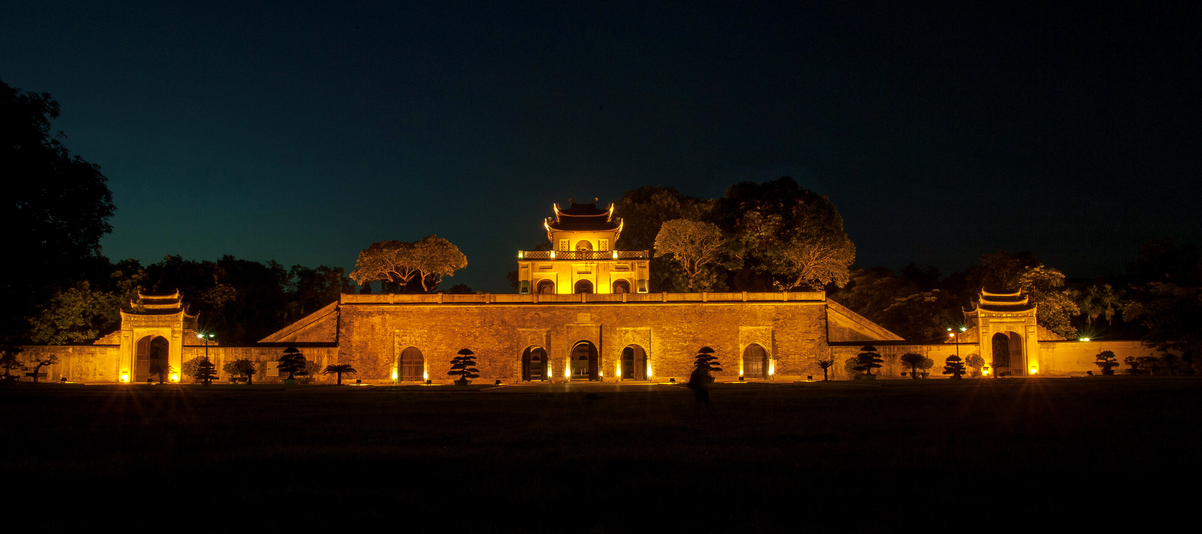 The first is the foundation of Kinh Thien Palace built in the early Le dynasty (1428) on the foundation of Can Nguyen palace (later renamed Thien An palace) under the Ly and Tran dynasties. That was originally the location of Nung Mountain (Long Do - Rong's Navel), considered the center of the Forbidden City and the Imperial Citadel, the place where the sacred energy of the country's rivers and mountains was cast together according to traditional feng shui concepts, whose relics are present today. There is also a palace floor with steps and stone railings carved with dragons in the 15th century.
The first is the foundation of Kinh Thien Palace built in the early Le dynasty (1428) on the foundation of Can Nguyen palace (later renamed Thien An palace) under the Ly and Tran dynasties. That was originally the location of Nung Mountain (Long Do - Rong's Navel), considered the center of the Forbidden City and the Imperial Citadel, the place where the sacred energy of the country's rivers and mountains was cast together according to traditional feng shui concepts, whose relics are present today. There is also a palace floor with steps and stone railings carved with dragons in the 15th century.
The second is Doan Mon gate, the southern gate of the Forbidden City during the Ly - Tran - Le dynasties. On this location, there are still relics of Doan Mon gate of the Le dynasty.
Phuong Dinh Nguyen Van Sieu (1799-1872), in the book Dai Viet Dia Cu Chi Toan Bien, has a quite clear description of Thang Long Imperial Citadel during the Le Dynasty: "In the middle is the Palace Citadel, inside the Palace Gate is Doan Mon. Inside Doan Mon is Thi Trieu Palace, inside Thi Trieu Palace is Kinh Thien Palace. On the right side of Kinh Thien is Chi Kinh palace, on the left side is Van Tho palace. On the right of Doan Mon is West Truong An, on the left is East Truong An, in the middle is Ngoc Gian. Inside the Imperial Citadel and outside the Palace in the East is the Thai Mieu, then the Eastern Palace.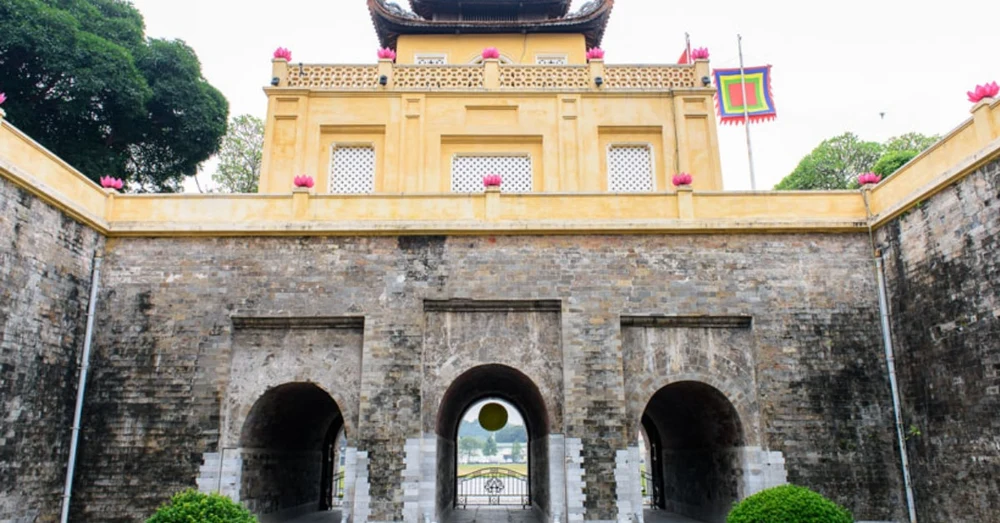 Thang Long - Hanoi Ancient Citadel is a historical and archaeological relic typical of the nation's history, the political center of Dai Viet from 1010 to 1802 and after 1945, the Democratic Republic of Vietnam. now the Socialist Republic of Vietnam. The ancient citadel of Thang Long - Hanoi during the monarchy, as the headquarters of the dynasties in the capital Thang Long, became the symbol of the imperial capital of the nation. The survival of the citadel is associated with each rise and fall of the nation's history.
Thang Long - Hanoi Ancient Citadel is a historical and archaeological relic typical of the nation's history, the political center of Dai Viet from 1010 to 1802 and after 1945, the Democratic Republic of Vietnam. now the Socialist Republic of Vietnam. The ancient citadel of Thang Long - Hanoi during the monarchy, as the headquarters of the dynasties in the capital Thang Long, became the symbol of the imperial capital of the nation. The survival of the citadel is associated with each rise and fall of the nation's history.
At all stages of the nation's history, Thang Long - Hanoi, whose center and symbol is the Ancient Citadel, has always been a place of convergence and radiance of Vietnamese culture to all regions of the country. The sacred souls of rivers and mountains have converged on the land of Thang Long - Hanoi, the talented people of the country have for many generations brought their wisdom to build this land worthy of being a place of spiritual masterpieces, becoming a symbol of the country. . Despite experiencing many changes, especially the destruction of Hanoi citadel by the French colonialists, up to now, Thang Long - Hanoi Ancient Citadel still retains a number of important vestiges and especially contains many Underground vestiges of special value (found in archaeological excavations at 18 Hoang Dieu), have proven the historical development of the Capital and the nation in all political aspects. , society, economy, culture, art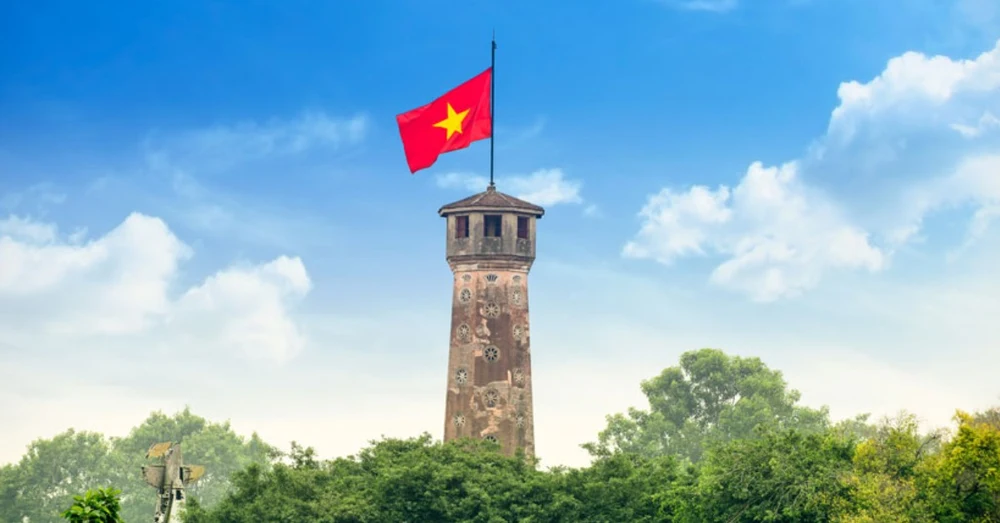 Remaining relics on the ground such as Ky Dai, Doan Mon, Kinh Thien Palace, Hau Lau, Bac Mon,... along with archaeological evidence at the relic site 18 Hoang Dieu, with many traces of foundations of a palace architectural complex, including large-scale wooden structures, many high-quality construction materials, many royal ceramics, many other royal treasures,...
Remaining relics on the ground such as Ky Dai, Doan Mon, Kinh Thien Palace, Hau Lau, Bac Mon,... along with archaeological evidence at the relic site 18 Hoang Dieu, with many traces of foundations of a palace architectural complex, including large-scale wooden structures, many high-quality construction materials, many royal ceramics, many other royal treasures,...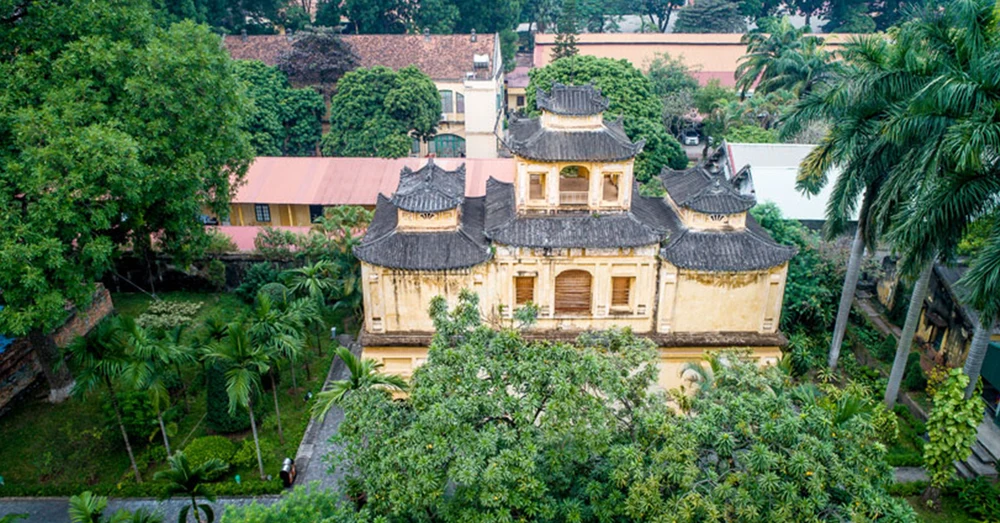 are evidence Materials reflect the country's high technical level and unique architecture and art in terms of regional and world development, especially during the prosperous period of the Dai Viet nation during the Ly, Tran, and Tran dynasties. Early Le - the period honored by many historians as the Era of Dai Viet Civilization (11th - 15th centuries).
are evidence Materials reflect the country's high technical level and unique architecture and art in terms of regional and world development, especially during the prosperous period of the Dai Viet nation during the Ly, Tran, and Tran dynasties. Early Le - the period honored by many historians as the Era of Dai Viet Civilization (11th - 15th centuries).
Hanoi Citadel is one of the typical manifestations of absorbing and combining Western-style fortification techniques with the ideas of a Chinese-style city. It can be seen that basically the Thang Long - Hanoi citadel in the 19th century was organized according to the Vauban model, but it also expressed the specific features of Vietnam. First and foremost in the Vietnamese perspective is that all these structures conform to the requirements of traditional geomancy; They are built in favorable locations - where the unusual geological features of nature, especially the river system, have been fully utilized.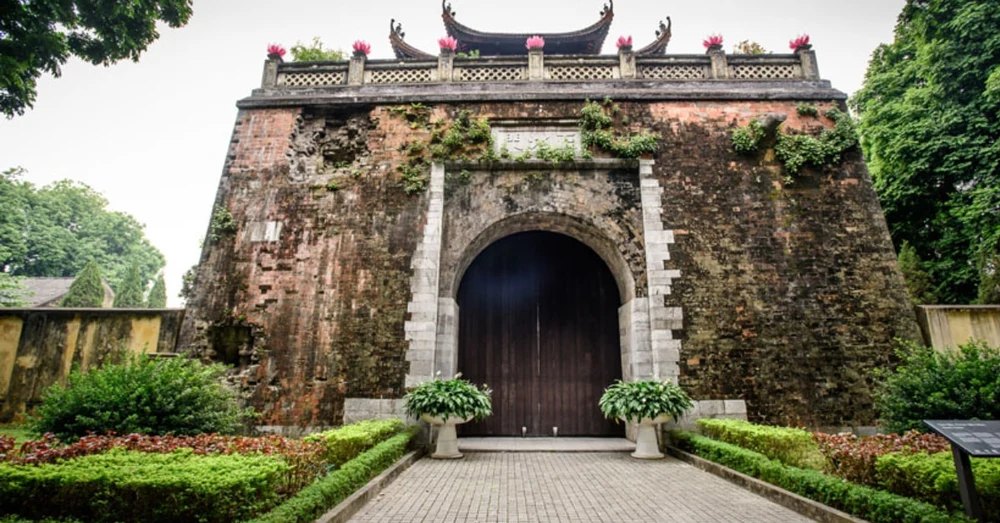 After 10 centuries of many wars, many historical changes and harsh natural conditions, the architectural vestiges and relics of the ancient palace are still relatively well preserved. ground. In the relic site, many foreign utensils and objects were also found, such as porcelain from West Asia, China, Japan, etc., reflecting the cultural exchange relationship between Thang Long and the world.
After 10 centuries of many wars, many historical changes and harsh natural conditions, the architectural vestiges and relics of the ancient palace are still relatively well preserved. ground. In the relic site, many foreign utensils and objects were also found, such as porcelain from West Asia, China, Japan, etc., reflecting the cultural exchange relationship between Thang Long and the world.





























